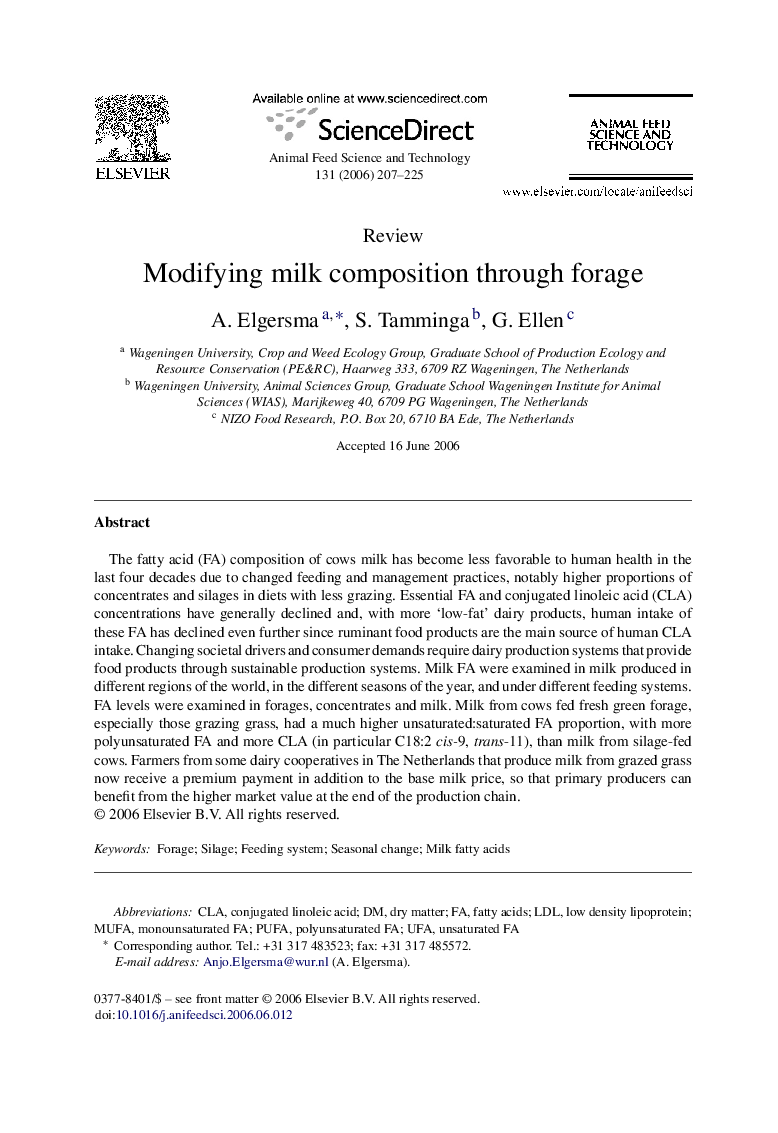| Article ID | Journal | Published Year | Pages | File Type |
|---|---|---|---|---|
| 2420854 | Animal Feed Science and Technology | 2006 | 19 Pages |
The fatty acid (FA) composition of cows milk has become less favorable to human health in the last four decades due to changed feeding and management practices, notably higher proportions of concentrates and silages in diets with less grazing. Essential FA and conjugated linoleic acid (CLA) concentrations have generally declined and, with more ‘low-fat’ dairy products, human intake of these FA has declined even further since ruminant food products are the main source of human CLA intake. Changing societal drivers and consumer demands require dairy production systems that provide food products through sustainable production systems. Milk FA were examined in milk produced in different regions of the world, in the different seasons of the year, and under different feeding systems. FA levels were examined in forages, concentrates and milk. Milk from cows fed fresh green forage, especially those grazing grass, had a much higher unsaturated:saturated FA proportion, with more polyunsaturated FA and more CLA (in particular C18:2 cis-9, trans-11), than milk from silage-fed cows. Farmers from some dairy cooperatives in The Netherlands that produce milk from grazed grass now receive a premium payment in addition to the base milk price, so that primary producers can benefit from the higher market value at the end of the production chain.
